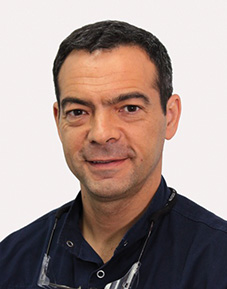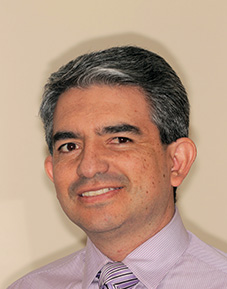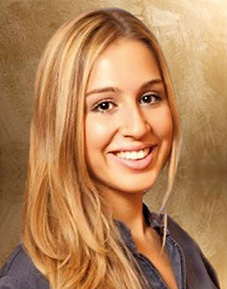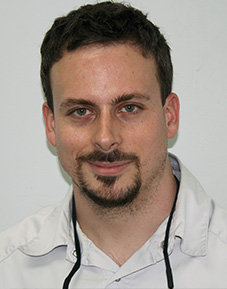A patient of 45 years, with no medical history of interest, with a totally edentulous mandible. After the clinical and radiographic study, it was decided to plan the insertion of 6 lower implants and the fitting of an temporary immediate screw-retained prosthesis.
After the standard surgical procedure, which consisted in the insertion of 6 Sweden & Martina Premium implants, 3.8 mm x 13 mm, the transgingival healing posts were positioned, with sutures around them. The transgingival posts were later replaced with PEEK transfers, which were then stabilized with a photopolymerizing resin (Conlight, Kuss Dental, Madrid, Spain). The models made previously were subsequently modified to allow them to enclose the fixed structure obtained, then taking an occlusion impression that would give the laboratory technician information on occlusion before the operation. The interior of the model was filled with a polymer (Impregum, 3M ESPE, Seefeld, Germany) and a closed-mouth impression was taken, positioning a material for registration on the occlusal faces of the teeth (Occlufast, Zhermack, Italy). After the polymerization time (3 minutes), the impression was removed and sent to the laboratory to allow the temporary prosthesis to be made.
Three months later, final rehabilitation was commenced, envisaging a hybrid screw-retained CAD/CAM prosthesis with a titanium structure.
The final impression was made using transfers with an open tray fixed with a 1.5 mm titanium bar. This procedure was completed using the Dent Weld intraoral welding machine. This device has a handpiece with forceps that transmits energy capable of generating the heat necessary to melt titanium.
Before starting the protocol, an OptraGate retractor (Ivoclar Vivadent, Schaan, Liechtenstein) was used to facilitate the opening of the patient’s mouth and improve access to the transfers. The Dent Weld device was then configured with the Single programme with a selected power value (54% at 162 joules for a titanium bar thickness 1.5 mm), and the electrodes were connected to the two transfers. The bar was cut with a diamond milling blade at right angles and irrigation, and the procedure continued on the subsequent transfer with a new welding bar. In this way it was possible to avoid the “memory effect” of the titanium bar, which could produce a distortion of the assembled transfers on detachment of the impression.
After all the transfers had been fixed two-by-two, the correct positioning of the custom-made tray was verified. The impression was then taken with the closed-tray technique, using a double mixture of light and heavy silicone (Virtual, Ivoclar, Schaan, Liechtenstein).





